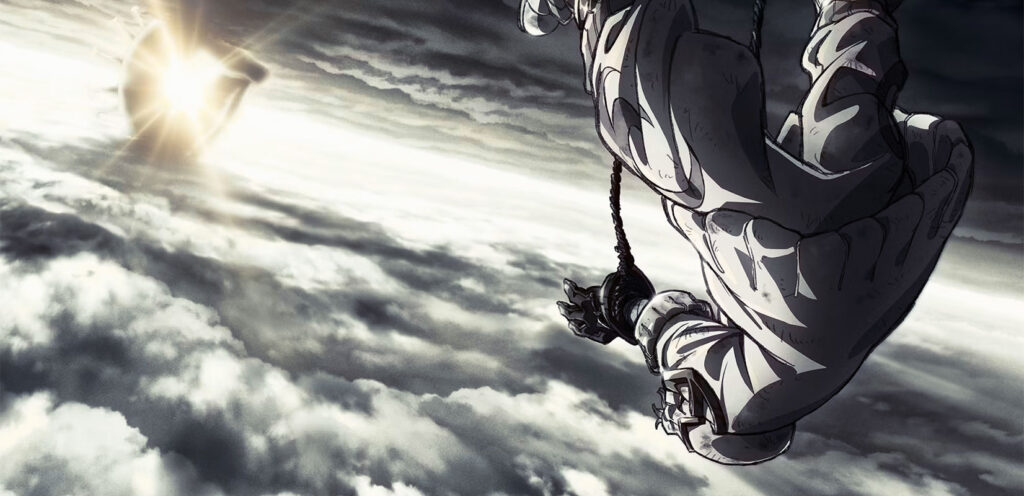Gachiakuta opens with a sharp, stylish premise: in the floating city known as The Sphere, residents toss away even a slightly damaged stuffed animal into the trash without hesitation. Below it lies The Pit, a wasteland of discarded trash, exiled criminals, and monsters made of society’s refuse. It’s a pointed metaphor for a world where the wealthy discard both objects and people, and the show wastes no time making that clear. The problem is—it wastes no time at all.
The first two episodes cram in worldbuilding, character backstory, and a full-blown banishment arc, but don’t leave room for anything to breathe. Rudo, our protagonist, is accused of a crime and sentenced to The Pit before we’ve had a chance to get to know him, or care. While it’s easy to justify his anger, the series never allows to sit with it. The show explains everything out loud, often relying on stiff exposition instead of letting the visuals do the work.
There are glimmers of something more profound. The series introduces Rudo as a scrappy outsider with a chip on his shoulder and a tragic family history. But so far, he feels more like a shonen archetype than a fully realized character. In other words, Rudo’s loud, brash, and a little too familiar. At the same time, the series attempts to evoke our care through well-worn tropes like “traumatic past” and “hidden power,” but they fail to have much impact. We’ve seen these moves before, and seen them done better.
Gachiakuta introduces a visually striking dystopia, but while its premise is full of promise, the first two episodes rely too heavily on exposition, shonen clichés, and rushed pacing.
Visually, there’s a lot to admire. Studio Bones brings its usual flair, and a few scenes—especially Rudo’s fall into The Pit—are strikingly beautiful. But the integration of CG for the trash monsters is jarring. The 3D elements clash with the otherwise gritty 2D aesthetic. As a result, it undercuts the danger of The Pit and makes the monsters feel out of place.
By the end of episode two, to the show’s magic system: if an object is cared for long enough, it develops a soul. In a world built on disposability, that’s a compelling idea. It’s a spark of heart in a series that, so far, leans too heavily on its anger.
There’s promise in Gachiakuta—in its commentary, its aesthetic, and its world. But at this early stage, rushed pacing and shonen clichés drag Gachiakuta down. With time, Rudo might grow into a protagonist worth rooting for, and the show could find its emotional center. For now, it’s all sharp edges and wasted potential.
Rating: 3/5 atoms

New Gachiakuta episodes premiere every Sunday at 8 AM PST on Crunchyroll.






